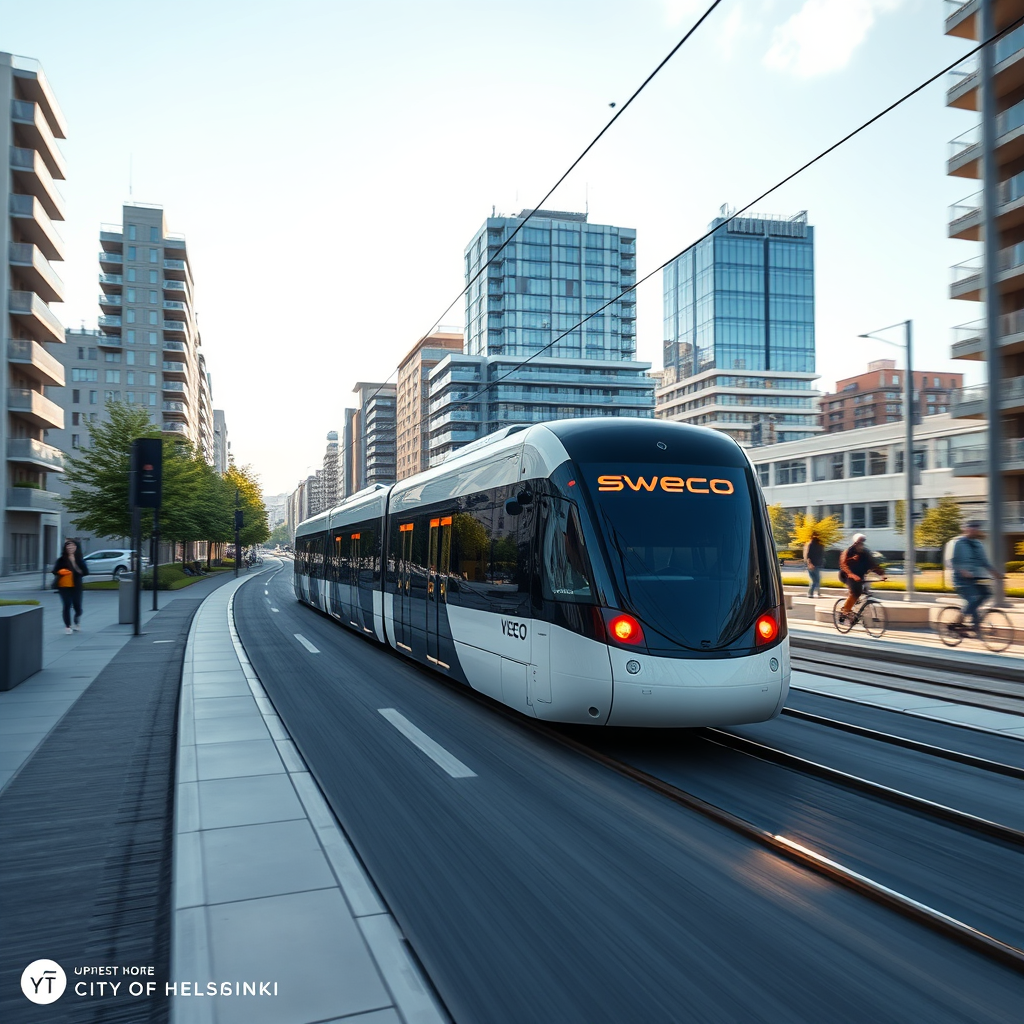Helsinki’s 15-Minute City: Sweco’s Rail Role

Introduction
This article explores the significant expansion of Helsinki’s light rail network, a crucial element of the city’s ambitious plan to become a carbon-neutral “15-minute city” by 2030. This €1.2 billion (approximately $1.26 billion USD) initiative involves the construction of over 30 kilometers of new light rail tracks, fundamentally reshaping the city’s transportation infrastructure and promoting sustainable urban mobility. The project highlights the vital role of engineering and design firms in realizing such large-scale, environmentally conscious urban development projects. We will examine the contributions of Sweco, a leading engineering consultancy, its role within the project alliance, and the broader implications of this initiative for urban planning and sustainable transportation globally. We will delve into the technical challenges, the collaborative nature of the project, and the potential impact on the citizens of Helsinki.
Sweco’s Role in the Helsinki Light Rail Expansion
Sweco, a prominent engineering and architecture consultancy, has secured a framework agreement to provide essential design and engineering services for the expansion of Helsinki’s light rail network. This encompasses various crucial aspects of the project, including the development of the Vihdintie, Viikki-Malmi, and West Harbour light rail lines. Sweco’s expertise extends beyond mere track design; it encompasses multidisciplinary services necessary for seamlessly integrating the new lines into the existing urban fabric. This includes careful consideration of urban planning principles, minimizing disruption to existing infrastructure, and ensuring the highest standards of design and construction are maintained throughout the process. Their long-standing collaboration with City Transport and the City of Helsinki underlines their established expertise and trust within the city’s infrastructure development landscape.
The “15-Minute City” Concept and Sustainable Urban Mobility
The Helsinki light rail expansion is integral to the city’s overarching vision of becoming a “15-minute city.” This concept aims to ensure that residents can access essential services – work, education, healthcare, and leisure – within a 15-minute walk or cycle from their homes. The expansion of the light rail network is a key enabler of this vision, significantly improving accessibility and reducing reliance on private vehicles. By prioritizing public transport and promoting sustainable modes of transportation, Helsinki aims to significantly reduce its carbon footprint and improve the overall quality of life for its citizens. This initiative provides a valuable case study for other cities aiming to achieve similar sustainable urban development goals.
Project Partnerships and Collaborative Approach
The Helsinki Urban Development and Tramway Programme Alliance exemplifies a collaborative approach to large-scale infrastructure projects. Sweco is part of a larger alliance that includes other leading companies such as YIT (a construction and development company) and NRC Group, highlighting the complexity and multifaceted nature of such undertakings. This collaborative model fosters a shared responsibility for project success, leveraging the specialized expertise of each partner to optimize efficiency and reduce potential risks. The financial aspects of the project are complex and will be further clarified as the program progresses, but the clear commitment of multiple parties underscores the city’s dedication to this transformation. This collaborative model is becoming increasingly prevalent in large infrastructure projects worldwide, emphasizing the benefits of shared expertise and risk management.
Environmental Considerations and Technological Advancements
Environmental sustainability is a central pillar of the Helsinki light rail expansion. The initiative aims to significantly reduce carbon emissions by shifting towards a more efficient and environmentally friendly public transportation system. The use of electric locomotives (EMUs – Electric Multiple Units) is key to achieving this goal. Furthermore, careful planning and construction techniques are employed to minimize environmental disruption. Sweco’s expertise likely includes the incorporation of sustainable design principles throughout the project lifecycle, from initial planning and design to construction and operational phases. This holistic approach underscores the commitment to creating a truly sustainable and environmentally responsible transportation network. The ongoing use of Intelligent Transportation Systems (ITS) will further optimize efficiency and reduce environmental impact.
Conclusions
The expansion of Helsinki’s light rail network represents a significant undertaking with far-reaching implications for urban planning and sustainable transportation. Sweco’s involvement, as a key partner in the project alliance, showcases the crucial role of engineering and design consultancies in delivering complex, large-scale infrastructure projects. The project’s success hinges on a collaborative approach, bringing together the expertise of various companies to overcome challenges and achieve the ambitious goal of transforming Helsinki into a carbon-neutral “15-minute city.” The initiative’s emphasis on sustainable urban mobility provides a valuable case study for other cities aiming to address similar challenges. The integration of sustainable design principles, the utilization of electric locomotives, and the application of Intelligent Transportation Systems (ITS) demonstrate a commitment to environmental responsibility. The financial commitment from the city and the collaborative effort of multiple organizations highlight the importance and impact of this project. By successfully completing this ambitious endeavor, Helsinki aims to enhance the quality of life for its citizens, improve accessibility, and contribute to a more sustainable future for urban environments globally. The lessons learned from this project will undoubtedly inform future urban transportation initiatives worldwide, setting a new standard for sustainable urban development.





